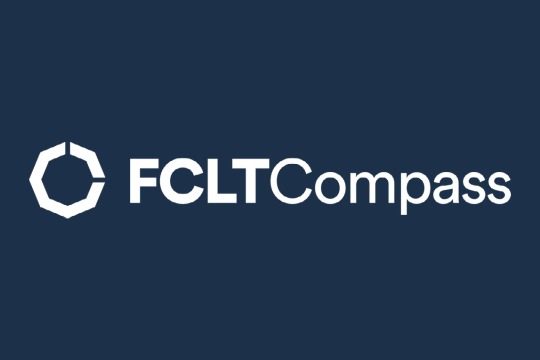
On March 24th, 2021, FCLTGlobal led a risk focus group alongside Alison Taylor and Brian Harward, a team of behavioral scientists from Ethical Systems, an in-house think tank at NYU’s Stern School of Business.

On March 24th, 2021, FCLTGlobal led a risk focus group alongside Alison Taylor and Brian Harward, a team of behavioral scientists from Ethical Systems, an in-house think tank at NYU’s Stern School of Business.
The conversation brought together subject matter experts and decision makers with the aim of both understanding why long-term investors default to short-term measurement methods and identifying barriers that prevent them from better aligning risk with their investment horizons. For more details about these measurement methods and their short-term orientations, see our earlier article.
While there is ample evidence to suggest that alternative risk measures may be more suitable to investors with longer horizons, we observed over the past three years that investors still exhibit status quo bias, continuing to use suboptimal defaults. This collaboration sought to examine what limited greater use of multi-horizon risk measures from a behavioral angle through our focus group.
Framing matters – and can vary depending on each organizations’ goals
A common theme heard throughout the session was that it is important to frame risk in the greater context of organizations’ investment purpose and stakeholder goals. Participants generally agreed that current default measurements orient towards the short term and that alternatives are additive in telling the whole story, which can include reporting, projecting, scenario design, portfolio construction, and asset allocation. We heard several examples of how reframing risk management elicited longer-term practices including:
Whether you’re a 30-year asset owner or an insurance agency seeking to asset-liability match time-horizons, framing matters. In many scenarios, it’s more about the “why” of having a risk function, and less about the “what.” Once stakeholder purpose and goals are established, risk statistics and scenarios with the appropriate time horizon can naturally follow.
Communication is essential
Another takeaway was that sometimes the issue may not be about the current default metrics themselves, but rather how they are communicated to others, like client decision makers, boards, and trustees.
Participants suggest it may be that metrics get presented to different audiences differently: crisp and purposeful scenarios for those outside the risk profession; nuanced, in-depth multi-horizon metrics for internal portfolio managers, risk managers, and peers.
In addition, participants agreed that current metrics like value-at-risk (VaR) are not flawed per se, but instead incomplete. These measurement methods can be part of a package that is both focused on risk over time and well-suited for executive and governing users. More is needed in this package, however, especially regarding the assumptions about time horizon, the foreseeable experiences within that time horizon, and the plans for when rarer market events happen. When communicating to the ultimate decision makers, it may be beneficial to acknowledge these alternative measures as “in addition to” , instead of “in lieu of”, default industry standards.
Who receives the nudge?
A final theme we heard from our conversation was around the question of “who receives the nudge?” While we had originally anticipated the answer to be risk professionals specifically, more parties may be needed to drive real change. Common challenges heard throughout the session involve the behavioral concepts of herding, bias toward the status quo, and empowerment: the ability (or lack thereof) to influence broader organizational investment decisions. To the extent that risk professionals lead these changes, a forum for collective action may be more helpful than asking a sole individual to deviate from the status quo: in doing so, the individual faces career risk and the organization faces a first-mover’s disadvantage.
Additionally, it may be that nudges happen not only at the risk professionals’ level but also at the user level. Depending on the audience, different nudges may apply to different groups of users: education and preparation at the board and trustee level, expectation and level-setting at client decision-maker level, and critical thinking and empowerment at the risk practitioner level.
Next steps
In the coming months, FCLTGlobal plans to reflect on the information we heard from the focus group and will consider how we might continue to contribute to the broader adoption of longer-horizon risk measurement tools.
Thank you to the participants for joining us in this important discussion. We welcome further suggestions and opportunities for collaboration and implementation about investment risk. If you have any further insights relevant to the issue of measuring, implementing, and communicating investment risk, please contact [email protected].
Participants
| Tim Alcorn Head of Investment Risk, Analytics & Research, Baillie Gifford |
Samir Ben Tekaya Vice President & Head of Investment Risk, British Columbia Investment Management Corporation |
Mark Blair Director, Ontario Teachers’ Pension Plan |
| Joseph Burschinger Senior Managing Director, Chief Risk Officer, Guggenheim Partners |
Ben Falk Director, EYQ |
Harpreet Gill Senior Director, Stewardship Investing, Church Commissioners of England |
| Fred Gjerstad Assistant Senior Investment Officer, Washington State Investment Board |
John Greaves Head of Investment Strategy and Research, RPMI Railpen |
Brian Harward Research Scientist, Ethanical Systems at NYU Stern |
| Jon Hubbard Managing Director, Investment Solutions Group, MFS Investment Management |
Will Kinlaw Senior Managing Director, Head of State Street Associates |
Kos Kolev Managing Director, Senior Risk Analyst, Guggenheim Partners |
| Ric Lacaille Executive Vice President and Chief Investment Officer, State Street Global Advisors |
Florence Lee Associate Director, Risk Management and Compliance, Hong Kong Monetary Authority |
Ding Li Senior Vice President, Total Portfolio Strategy, GIC |
| Alan Mak Director, Risk Management and Compliance, Hong Kong Monetary Authority |
Grace Qiu Senior Vice President, Total Portfolio Strategy, GIC |
Gavin Ralston Head of Strategic Client Group, Schroders |
| Trey Stenerson Senior Managing Director, Head of Investment Risk Management, Nuveen |
Alison Taylor Executive Director, Ethical Systems at NYU Stern |
Allyson Tucker Chief Investment Officer, Washington State Investment Board |
| David Turkington Senior Managing Director, Head of Portfolio & Risk Research, State Street Associates |
Sebastian Vadakumcherry Chief Risk & Compliance Officer, Alaska Permanent Fund Corporation |
David Vickers Chief Investment Officer, Brunel Pension Partnership |
| Deirdre Ypma Head of Equity Risk Analytics, Neuberger Berman |

Risk and Resilience | Report
21 December 2018 - Boards and executives of long-term funds, such as pension plans, sovereign wealth funds, and endowments, have a challenging problem. They need to manage those portfolios to meet their long-term purpose, which may be decades or more into the future. Yet no fund has the luxury of looking only to that long-term time horizon. Each must also meet expectations in the near term in order to continue in its role and with its investment strategy.

Risk and Resilience | Article
25 January 2021 - In a decade-long low interest rate environment, riskier asset classes have seen accelerated asset gathering as savers chase yield.

18 December 2024 - FCLT Compass is a dashboard measuring the investment horizons of the global investment value chain, how households are saving and allocating their money, and how long they can live off those savings. Calculating these metrics provides a holistic understanding of the long- or short-term orientation of global capital markets and how that orientation impacts the financial futures of millions of people worldwide.